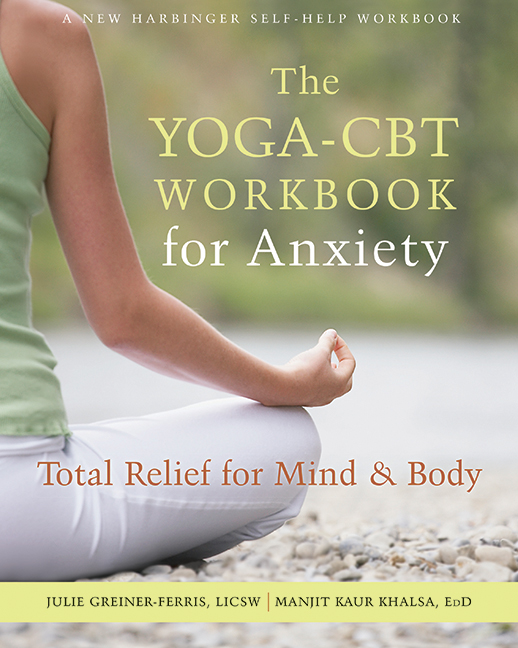By Julie Greiner-Ferris, LICSW, and Manjit Kaur Khalsa, EdD
Because anxiety is a mind/body experience, the most effective treatment to address it is a mind/body solution. Therapists are most helpful when we begin to gently direct our clients away from the myriad details, and toward the nature and symptoms they are experiencing.
Anxiety is a broad term that is used differently by different clients. Some symptoms are physical (rapid heart rate, shaking, muscle tension) and some are cognitive or involve thoughts (worry, rumination, negative self-talk). People who struggle with anxiety often have no awareness that they are experiencing both types of symptoms, which trigger the other in problematic cycles.
This process of identifying how the physical and cognitive symptoms impact your client opens the door for developing targeted interventions to address them.
An initial line of questioning might be:
When you begin to feel anxious, do you notice it first in your thoughts, with worry, or in your body, with a racing heart?
When your heart races, is that followed by frightening thoughts?
When you go to the grocery store, what thoughts begin to make your chest tighten?
Research suggests that anxiety and breathing patterns may be related. Introducing a simple Kundalini yogic breath technique such as the Minute Breath may effectively change the client’s breathing pattern and help calm the associated thoughts.
KY MEDITATION: The One-Minute Breath
(Bhajan 2003)
Sit in Easy Pose with your hands in gyan mudra.
Close your eyes and focus at the point between your eyebrows.
Inhale for five seconds (build to 20 seconds).
Hold for five seconds (build to 20 seconds).
Exhale for five seconds (build to 20 seconds).
Repeat and continue the breathing sequence.
Begin with one minute; you can build to eleven minutes.
Inhale and suspend the breath briefly. Exhale and relax the breath, and relax the posture.
Remember: The segments of this breath are equal. If you’re unable to start with five seconds, then begin with less, remembering to keep the segments the same duration.
When you finish the One-Minute Breath Meditation, take a moment and allow your breathing to return to normal.
 Julie Greiner-Ferris, LICSW, has over twenty-five years of experience in the treatment of mental health issues. A graduate of Boston College School of Social Work, she is cocreator of yoga-cognitive behavioral therapy (Y-CBT), and is program director of outpatient services at Riverside Community Care in Upton, MA.
Julie Greiner-Ferris, LICSW, has over twenty-five years of experience in the treatment of mental health issues. A graduate of Boston College School of Social Work, she is cocreator of yoga-cognitive behavioral therapy (Y-CBT), and is program director of outpatient services at Riverside Community Care in Upton, MA.
Manjit Kaur Khalsa, EdD, is cocreator of Y-CBT. An experienced psychologist, she practices at Riverside Community Care in Upton, MA, and has a private practice in Millis, MA. She is a longtime Kundalini yoga teacher, student of Yogi Bhajan, and president of Sikh Dharma of Massachusetts—the corporation which oversees the Guru Ram Das Ashram in Millis, MA.


 Why Journaling Is Especially Helpful to Adult Children of Emotionally Immature Parents
Why Journaling Is Especially Helpful to Adult Children of Emotionally Immature Parents